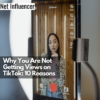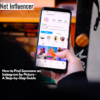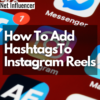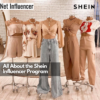Strategy
Architects Of Immersive Worlds: Inside Lenovo’s ‘Quest For The Impossible’ Series from Portal A
In a medieval castle in England, two gaming creators find themselves transported from their familiar digital battlegrounds to a world of stone walls, royal chambers, and medieval challenges. One will be treated as nobility, the other as a peasant — their fates determined by fans participating in a Minecraft scavenger hunt taking place simultaneously in a digital replica of the very castle they’re standing in.
This isn’t a reality TV pitch or a gaming tournament concept. It’s “Quest for the Impossible,” a campaign by social content company Portal A for Lenovo Legion and Intel. With this campaign, Portal A has created an interconnected experience spanning physical locations, digital recreations, live streams, and multi-platform content.
“Whenever we make something, our goal is [to create] a property for the brand that they can keep coming back to over and over again,” explains Aditi Rajvanshi, Head of Strategy at Portal A.
Portal A’s strategy encountered a fundamental challenge: how to make a physical castle experience accessible to a digital audience of Gen Z gamers. “If we could create a digital replica of this physical space that viewers and fans could engage with and participate in, that would change how audiences experience this program globally,” Aditi explains.
This world-building approach also addresses a persistent hurdle in brand activations — the tension between creating memorable real-world experiences and achieving meaningful digital reach.
The Campaign Mechanics: Competition for the Crown
At its core, “Quest for the Impossible” was structured as a competition between two popular gaming creators at Thornbury Castle in England, Tommy (Tommyinnit) and Ey (EYstreem), who would compete for the title of “Ruler of the Realms.” Comedian Leenda Dong hosted the adventure.

Image: Tommyinnit & EYstreem
The campaign integrated multiple components that linked physical experiences with digital participation:
The Challenge: Portal A created a detailed digital replica of Thornbury Castle where fans could participate in a scavenger hunt. “The scavenger hunt with that would change how audiences experience this program,” Aditi explains. This became the first competitive element, determining which creator would be treated as royalty and which as a peasant during their first night at the castle.
The Livestream Element: On the first day, both creators live-streamed from the castle, allowing their audiences to experience their arrival and initial reactions in real time. Tommy, whose audience is primarily on Twitch, streamed there, while Ey, who has a YouTube livestream audience, used that platform.
YouTube Hero Videos: Following the experience, each creator produced their own YouTube video telling their side of the story. Importantly, Portal A gave them creative freedom in this process: “Both creators, for example, captured their own video footage on set. And that was by design; it’s really you telling the story to your audience the way you think is best.”
The Brand’s Perspective: Lenovo Legion also released a brand film that showed behind-the-scenes aspects of the experience. “The tone of the brand film tells the story of the program in a fun way, like behind-the-scenes. Imagine the making of an epic movie,” Aditi describes.
Throughout these components, Aditi says that the brand inclusion was subtle but meaningful. “In the world of ‘Quest for the Impossible,’ Legion and Intel are the providers of this world, this castle adventure that we take our creators to,” she explains, noting that the campaign wasn’t focused on product features but rather on building “brand love, brand affinity.”
Bridging Physical and Digital: The Multi-Platform Strategy
A notable feature of “Quest for the Impossible” was its platform strategy that maintained audience engagement across multiple touchpoints and time periods.
Aditi explains the reasoning behind their platform choices: “When we figured out that there was going to be storytelling involved, especially longer form storytelling that required you to go from one chapter to the next, we knew that YouTube was our go-to platform.”
This platform selection aligned with their audience goals: “We were trying to reach Gen Z gamers, and YouTube is one of the key platforms for Gen Z gaming audiences.”
The live stream component solved a key timing challenge. Without it, audiences would only experience the castle weeks after post-production was complete.
“Having a live stream while the creators are in the castle will change how audiences experience the castle and how audiences see the castle’s role in this,” Aditi explains. “Knowing that we could create that initial moment where audiences first experience the castle with the creators experiencing it for the first time too would bring them in.”
During the weeks between the initial livestream and the YouTube video launch, Portal A maintained audience engagement through the digital world: “We had a few international creators stream and play within the virtual castle, the replica world. That became our way of keeping the castle alive within the Minecraft community and the audience.”
For social platforms, Portal A developed content for both Instagram and TikTok, though Aditi notes that “TikTok continues to be a volatile platform for branded content.” Their strategy included “Instagram Reels in the mix” to counter “that TikTok volatility.”
Leveraging Creator Dynamics and Audience Psychology
Portal A’s creator selection process was strategic and deliberate. They sought gaming creators with large Gen Z followings who were also “open to getting out of their comfort zone” and “open to experimenting with their formats.”
Tommy and Ey each brought distinct styles and audiences. “Both creators tapped into sort of similar audiences, tapped into the Gen Z gaming audience that we wanted to,” Aditi explains. While Tommy’s content already included comedy and diverse formats, Ey expressed interest in doing more “IRL stuff” beyond gaming, making them both well-suited for the campaign’s experimental approach.
Portal A understood that competing fan communities would drive engagement. “There is nothing that gets a YouTube audience riled up except when they have to stand up for their creator against another creator,” Aditi notes. “We really wanted to play up that drama.”
The strategy included intense audience participation: “It was really special to watch both creators’ audiences clamor to get inside the live stream rooms and get into it, start talking to each other, and watch them play together in Minecraft.”
Portal A also ensured cross-promotion between the creators by incorporating a giveaway into the YouTube videos. “The passcode is split between the two YouTube videos. So, if you want the passcode, you have to watch both YouTube videos to get the passcode.”
According to Aditi, this ensured viewers would engage with both creators’ content: “It just speaks to this idea that this is a collaboration. It is a one-two beat. You can’t quite watch one video without watching the other to know what happens.”
Results and Positioning
As Aditi shares, the campaign has reached over 14 million views and counting, generated 700k+ engagements, and around 220k watch hours across creator and brand content.
Aditi highlights that fans are actively referencing their participation: “Even now when we go back to the YouTube comment section, there are so many people who were like, ‘I was there at the live stream. I watched you win or lose during the live stream.'”
Beyond metrics, the campaign is targeting the evergreen nature of well-crafted creator content. “Especially for long-form YouTube, longevity is on the table,” Aditi observes. “If a video is doing well, is relevant to its audience, and can retain audiences, then the algorithm will serve that video to broader audiences as time goes by.”
For Portal A, this campaign reflects their positioning in the creator economy as Aditi sees the industry being pulled in two directions: performance marketing focused on scale versus premium storytelling that builds deeper brand connections.
“Brands are being pulled in the direction of performance marketing, where it’s all about scale at one end,” she explains. “Can everybody be talking about the same discount code on the same day? That’s one direction.”
Meanwhile, Portal A stands firmly in the opposing camp. “We are squarely on the other side of the spectrum where we believe in the power and impact of high-quality, storytelling-driven brand content,” Aditi concludes.





















